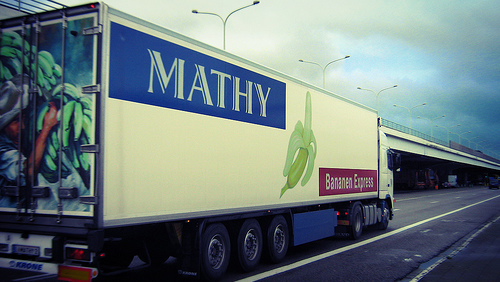 Kids love bananas! In fact, after trying Whole Grain Rice Cereal, I fed both of my children organic bananas as their second food. I grew up on bananas, and my family loves banana bread; however, after reading Barbara Kingsolver’s Animal, Vegetable, Miracle: A Year of Food Life (P.S.) I can’t buy a banana without a huge pang of environmental guilt.
Kids love bananas! In fact, after trying Whole Grain Rice Cereal, I fed both of my children organic bananas as their second food. I grew up on bananas, and my family loves banana bread; however, after reading Barbara Kingsolver’s Animal, Vegetable, Miracle: A Year of Food Life (P.S.) I can’t buy a banana without a huge pang of environmental guilt.
[social_buttons]
I live at 40° latitude, certainly not the climate bananas grow in. Bananas grow in humid tropical regions and need 10 – 15 months of frost-free conditions to produce a flower. Banana plants stop growing in temperatures drops below 53° F.
The world is hooked on bananas! Bananas constitute the 4th largest fruit crop of the world, but at what cost to the environment?
There are so many reasons to stop eating bananas. Banana plantations negatively impact tropical ecosystems, and small farmers can’t compete with multinational companies that promote overproduction of commodity crops lowering prices. All of these reasons are good enough to make me eliminate bananas from our family’s diet, but the carbon footprint of transporting these tropical fruits to my home Northern California and how such transportation benefits the oil industry is the final straw. I don’t care that Dole is offsetting banana transportation in Costa Rica; it is still unsustainable to eat tropical fruit on a daily basis in the Northern Hemisphere.
I can’t say my family has completely given up bananas; it’s just they’ve become a rare treat. We haven’t bought any bananas in two months, and we are finding other local sources for our potassium, such as Jerusalem artichokes. There is plenty of wonderful fall fruits closer to home for us to enjoy!
Image: Nils Geylen on Flickr under a Creative Commons License
try dried banana.its chewy n sweet.